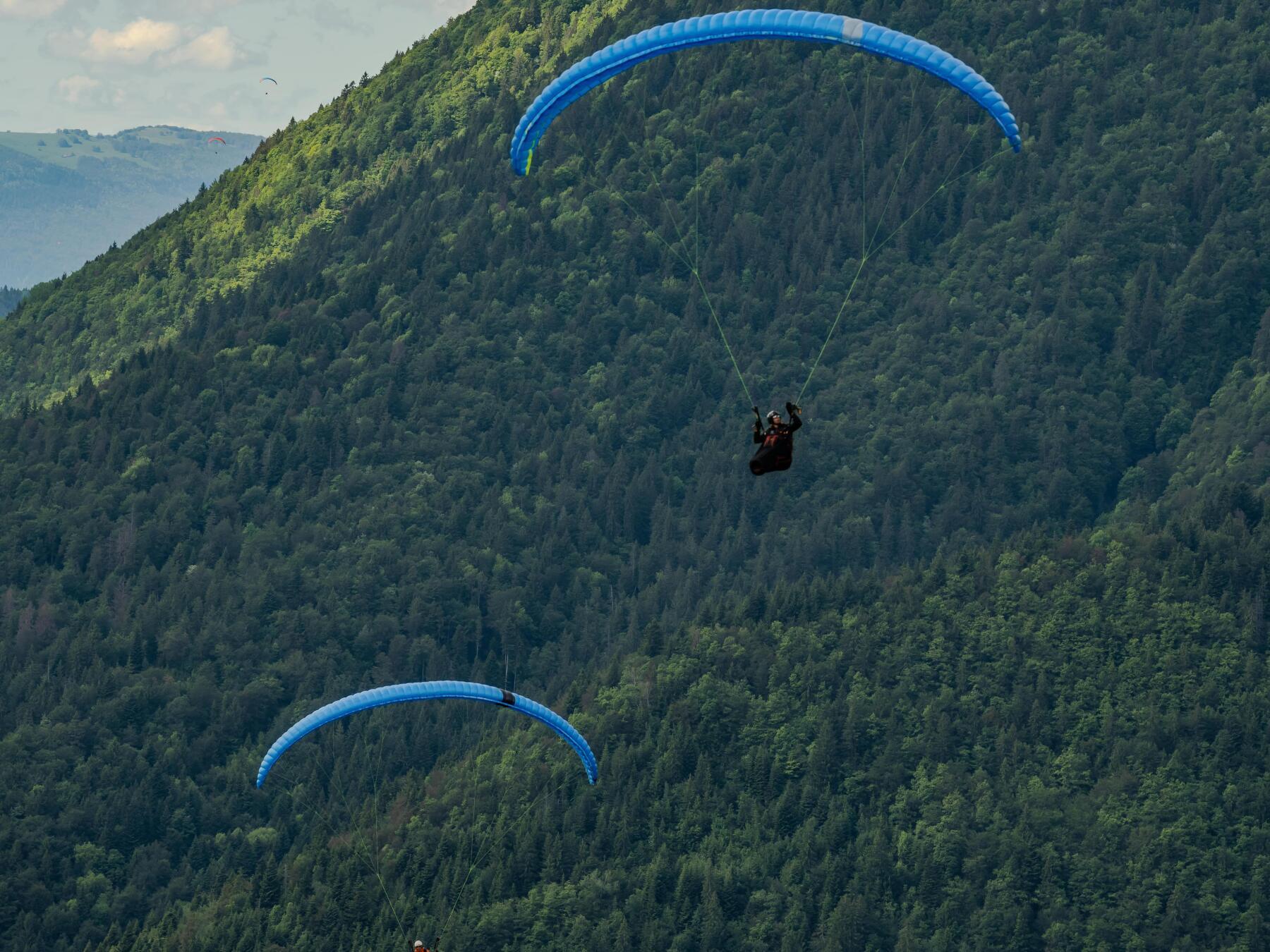Testimonies: "my first flight"
Aurélie:
"It's something I wanted to do, I'm neither a whizz kid nor fearful, but I do like a bit of "daredevil" stuff. The first time was on the Dune du Pyla in southwest France. On the morning of the flight, I was a little apprehensive. I didn’t know how it would go, but I really wanted to do it.
Upon arrival at the top of the dune, there was not enough wind. I waited quietly, the wind got up in the afternoon.
For an introduction, you have someone in your back while you are flying, an instructor. You have a kind of big backpack, things around your thighs like climbing harnesses. The instructor asked me if I was ready and we started off together. Once you've launched, your legs are empty, you feel like you can sit in a seat. It’s like a merry-go-round; the stomach rises, it’s really fun, I enjoyed myself during the whole flight.
It’s really special, you feel like you’re flying, and in fact, you truly are! It's wonderful! It’s as if you’ve entered another world... I saw the people on the beach, waving at me, I felt like I’d be picking up the trees, you lose your sense of distance.
The flight lasted half an hour, I was apprehensive about landing, the instructor told me to stretch my legs and sit down, and everything went well. Even though I didn’t fly very high with the lack of wind, I enjoyed the view of the Bassin d'Arcachon, it was great. I can recommend it to others, it’s not rough, it’s gentle ... I feel like doing it again ;)"
Emilie:
" 30 years: what’s the best age to take up paragliding? For a mountain lover like me, it was clearly a box to tick. In addition, I probably chose the best spot for my two-seater introduction: the splendid Chamonix valley!
Reservations made for a Saturday morning in July when the weather conditions are perfect: great sun, very little wind, temperature a trifle cool but we don’t complain. I'm all excited about flying and the big smile I had when I woke up doesn't leave my lips. Fear? Not even an ounce! It's a two-seater introduction, I know the instructor will handle everything for both of us. Honestly, it's reassuring.
I find the instructor at Planpraz, a plateau at an altitude of around 2000 m. The view is already magnificent. I hear that same instructor is approaching the age of 75, incredible since he looks 15 younger! He is an experienced paraglider who even has special certification allowing him to fly people with reduced mobility. Yes, he has already flown people in wheelchairs. He also told me that his oldest customer was 92 years old!
Anyway it takes him a few minutes to attach me to the backpack and all the gear. No time to take a breath – he asks me to walk, then run to take off. And... that is it. Not even a little tremor, nothing. Just the wonderful sensation of flying with the exceptional panorama of Mont Blanc. I'm taking it all in, it’s so beautiful. I feel like time is suspended as we are suspended from the canopy... It looks like we're not going very fast even if we are moving pretty fast.
The instructor allows me to "control" the canopy a bit, turning right and left. Again, I'm not afraid, I'm guided and I'm amazed. Finally, he gives me the chance to do a few acrobatics. We do a few 360° turns, and fly in every direction, that's great! Super-impressive all the same. And I feel a little sad at the end... It's time to land: fast and smooth.
The 20-minute flight went by at a crazy speed! 20 swirling, intoxicating minutes, leaving me with incredible memories! Shall we go again tomorrow?"








